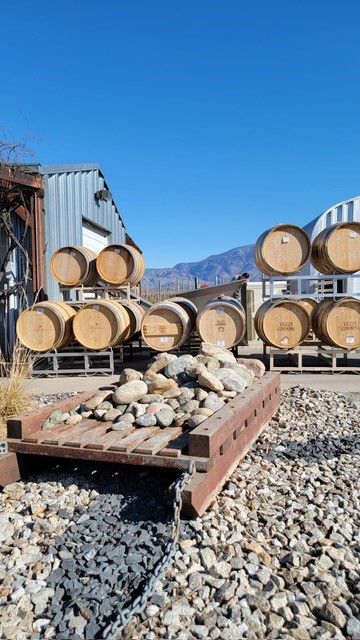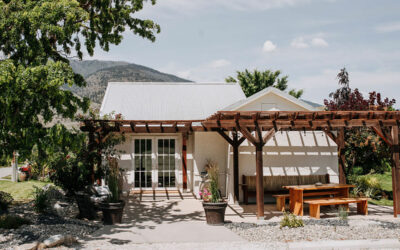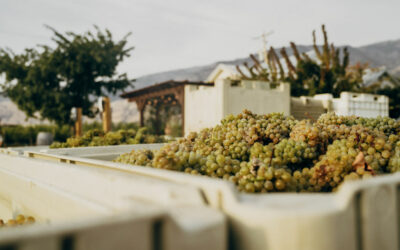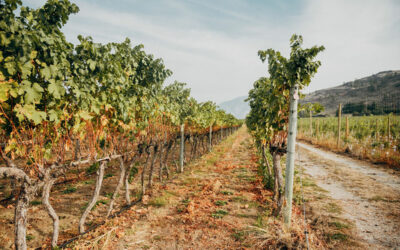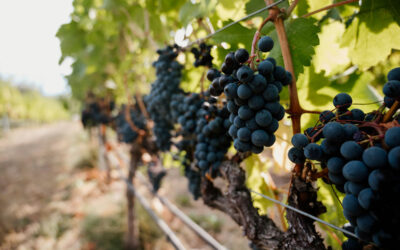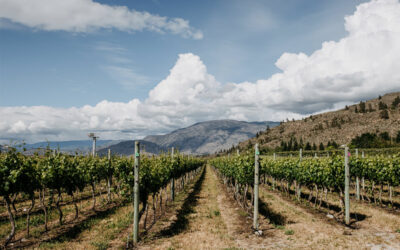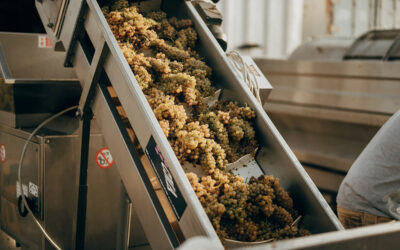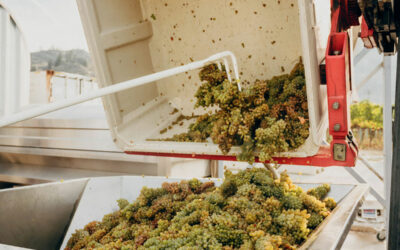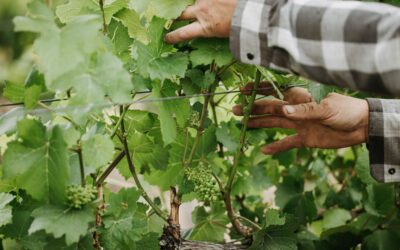Our STORY
Stewardship of our land.
STONEBOAT STORY
The story of Stoneboat begins many decades ago, in 1979, when the original founders, Lanny and Julie Martinuk, left their careers in Vancouver, packed their dog, their savings, and some furniture into an old Ford truck, and drove to the Okanagan where Julie had grown up.
Following his hopes to plant a vineyard, Lanny was one of the first growers in the Okanagan to convert orchard over to vinifera in 1983. Because grapes weren’t yet very profitable, he gradually planted vines alongside crops ranging from flowers to tomatoes to apples. while Julie continued to work as a pharmacist. There were some educating challenges along the way. In 1983, Lanny’s first vines were wiped out by a severe early cold spell, and the home site’s rocky soil proved difficult to pound posts into, requiring the use of a sharpened steel train rail to loosen the ground. It was only after a lot of work that the majority of the original property was planted with vines in 1992.
In 1998, Lanny purchased the Orchard Grove vineyard on a handshake, where the winery is now located. This site would be planted primarily in Pinot Noir, Pinot Gris, and Pinotage. This vineyard gave Lanny and Julie the resources to finally unite their grapes in their own bottle in 2005. Choosing the name Stoneboat for the winery required little debate: A Stoneboat is, quite simply, a sledge for carrying stones that are picked off the land. It is how our Home Vineyard was first cleared of its rocks. The family felt that it was a fitting tribute to their land and to the effort required to farm it. It also represents qualities they value: hard work, perseverance, and tradition.
Our Vines
Our vineyard is located on what we call The Black Sage Gravelbar. On the northern tip of the Black Sage benchlands, famous for their sun-baked sands, there is a tiny pocket of land- probably no more than 3 or 4 square kilometers between Black Sage Road and the Okanagan River- of a dramatically different nature. The Martiniuks refered to this area as the Black Sage Gravelbar.
The defining characteristic of the Black Sage Gravelbar soils is the rocks that lie beneath them. Two to three feet of sandy, gravelly loam give way to hundreds of feet of rounded, similarly sized stones that were deposited by ancient glacial meltwater. They provide excellent water drainage and keep vine vigour in check. Most importantly, these stones are frosted with a coating of calcium and other minerals, known as carbonate skins, which integrate with the soil.
Rocks, however, do not stay beneath the soil; they heave up to the surface with the ground’s freezing and thawing. Lanny eventually gave up fighting the stones and began kicking them under the vines, where they act like hot water bottles, absorbing heat during the day and radiating it at night.
A struggle can bring out the best in people and in grapevines, which tend to grow excellent grapes on difficult sites. As the plants matured it became apparent that there was something special about the wines made from them. The winemakers to whom Lanny sold his grapes were intrigued by the wines sourced from his vineyards. A visit from Pedro Parra, an international terroir consultant renowned for knowledge of wine region subsoils, confirmed that some of the world’s great wines are grown upon rocks very much like those below the Orchard Grove Vineyard.
Today, after countless broken mower blades and sleepness nights fighting frost, the distinct minerality and complexity of Stoneboat’s wines has affirmed that the hard work required of the family, and of the vines, yields rich rewards. They will continue to mangle mowers, but the rocks play an important role in the quality of Stoneboat’s wines.
Because of their southwestern exposure, the vineyards take full advantage of the South Okanagan’s desert sun & heat, which develops rich, earthy flavours in the grapes. Desert heat, however, is followed by desert cold. Heat quickly escapes into the sky once the sun sets. Without nearby lakes to moderate radiative cooling, this area experiences extreme night-day temperature differentials of up to 25º C in late summer. Cool air from the eastern mountains flows through the vineyards and chills the grapes on the vines, slowing the ripening process to a near halt. This preserves acidity and helps along the formation of aromatic compounds that are easily cooked out in constant warmth. Pinots, which easily burn and overripen, are particularly well-suited to this climate.
The old (and clichéed, some would say) adage that wines are made in the vineyard is founded in truth. So long as things aren’t meddled with in the cellar, there are undeniable markers that make the wines distinctly Stoneboat’s own: from the chalky minerality of the Pinot Gris to the flamboyant fruit of the Pinotage, a fine example of the influence terroir can have on wines.The winemaker’s job is to preserve the grapes’ expression of the land – mostly by manipulating the wines as little as possible. Lanny would say the same about growing vines. Pinot varietals like it and have thrived here, which is why the vineyard is planted to these varietals.
The Martiniuks felt that the land will take care of those that take care of it. Their vineyards are where they make a living, and also where they live- along with many other plants and critters. If the land is nurtured, not exploited, it will support whatever grows on it indefinitely.
A vineyard will produce superior grapes if it is grown on healthy land. Thoughtful farming is how Stoneboat achieves this. It requires an intimate understanding of the vineyards- along with a healthy dash of common sense-and is based upon viewing the vineyard and winemaking process as living systems of interconnected parts. What is done to one part- the soil, the vines, the yeasts- affects all the others.
In following this philosophy, viticulture & winemaking at Stoneboat are not done according to charts or formulae. Science & instruments are essential to describing the condition of the vines or wines, but there is no substitute for the discerning eye of an experienced grower or winemaker.
People thrive when leading balanced lives. Grapevines are no different, so Lanny strived to keep the vineyard ecology in balance by encouraging biodiversity and healthy soil. This in turn helps prevent undesirables like pest outbreaks and vine disease. Lanny abhors picture-perfect “sterile” vineyards, which often require significant mechanical and chemical inputs, and instead leaves bushy areas under the vines and wildlife corridors for birds and insects.
Natural processes can then take on some of the work, so the use of tractors, sprays, and fertilizers can be minimized. Lanny learned over decades of farming that the more one interferes in the system, the greater the likelihood that this balance will be disrupted and the honesty of the wines’ expression diminished.
In 2021 Lanny and Julie decided to retire and sold Stoneboat to us, a group of enthusiastic investors passionate about wine. Today, we still honor all of Lanny’s hard work, passion, practices, and values at Stoneboat. Without question, our wines are what they are now because of the grapes they’re made from and the land those grapes are grown upon. All of which Lanny and his family built.
Since its first vintage in 2005, Stoneboat has quietly earned awards and accolades for its focused, terroir-driven wines. The winemaking and viticulture programs are evolving and under constant refinement, leading to better wines year after year. We’re very proud of the wines, but we’ve really only just scratched the surface.
Today, Stoneboat continues to focus on creating excellent wine that is reflective and honoring the terroir on which its thoughtfully farmed grapes were grown. We aim to be humble, true, and authentic.

